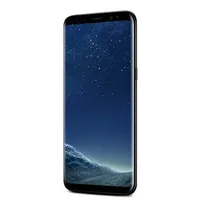Galaxy S8 vs. OnePlus 5T: Can the Ultimate Underdog Beat Samsung?
The Samsung Galaxy S8 is one amazing Android phone, but the OnePlus 5T is a killer value. In this comparison, we settle the score.
With its captivating Infinity Display, great camera and incredibly sleek design, the Samsung Galaxy S8 is the best Android phone you can buy. But it certainly isn't the cheapest. The smaller, 5.8-inch Galaxy S8 costs $724, while the larger, 6.2-inch S8+ costs $100 more.
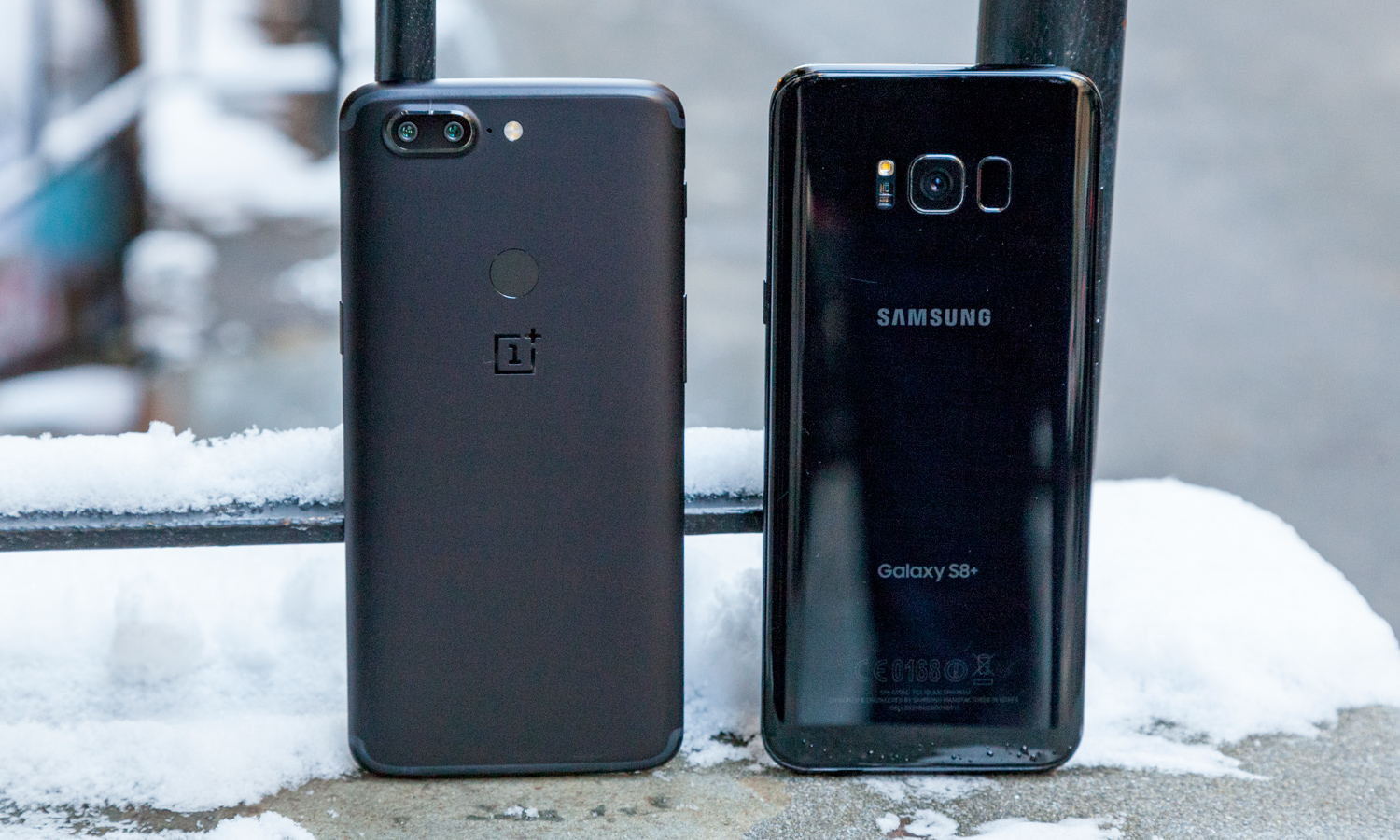
Fortunately, OnePlus has an answer. The recently released OnePlus 5T is the best smartphone value on the market, offering much of what we loved about the Galaxy S8 but in a cheaper, $499 package.
Let's take a closer look at how the two phones compare, to see whether Samsung's flagships are really worth all that extra money.
Specs
| Galaxy S8 | Galaxy S8+ | OnePlus 5T | |
| Price | $724 | $824 | $499/$549 |
| OS | Android 7.0 Nougat with TouchWiz 8.1 | Android 7.0 Nougat with TouchWiz 8.1 | Android 7.1.1 Nougat with OxygenOS |
| Screen Size, Resolution | 5.8-inch, 2960 x 1440, Super AMOLED | 6.2-inch, 2960 x 1440, Super AMOLED | 6-inch, 2160 x 1080, AMOLED |
| CPU | Qualcomm Snapdragon 835 | Qualcomm Snapdragon 835 | Qualcomm Snapdragon 835 |
| RAM | 4GB | 4GB | 6GB/8GB |
| Storage | 64GB | 64GB | 64GB/128GB |
| microSD Slot | Yes | Yes | No |
| Rear Camera | 12 MP (f/1.7) | 12 MP (f/1.7) | Dual 16 MP (f/1.7) and 20 MP (f/1.7) |
| Front Camera | 8 MP (f/1.7) | 8 MP (f/1.7) | 16 MP (f/2.0) |
| Battery Life (Hrs:Min) | 10:39 | 11:04 | 11:03 |
| Water Resistance | IP68 | IP68 | No |
| Size | 5.9 x 2.7 x 0.3 inches | 6.3 x 2.9 x 0.3 inches | 6.1 x 2.9 x 0.3 inches |
| Weight | 5.5 ounces | 6.1 ounces | 5.7 ounces |
Design
Samsung has coined an aesthetic all its own with the Galaxy S8. While there's nothing wrong with the OnePlus 5T's design, it really doesn't stand out from the Android crowd. Samsung's handsets don't have that problem, and it mostly comes down to one killer feature: the Infinity Display.

The steeply curved Super AMOLED panels on the Galaxy S8 and S8+ add another dimension to on-screen content. The bezels just melt away, forming a consistent curve running from the back of the phone all the way to the sides of the display. The Galaxy is easier to hold, maximizes viewable real estate, and looks and feels like nothing else out there.
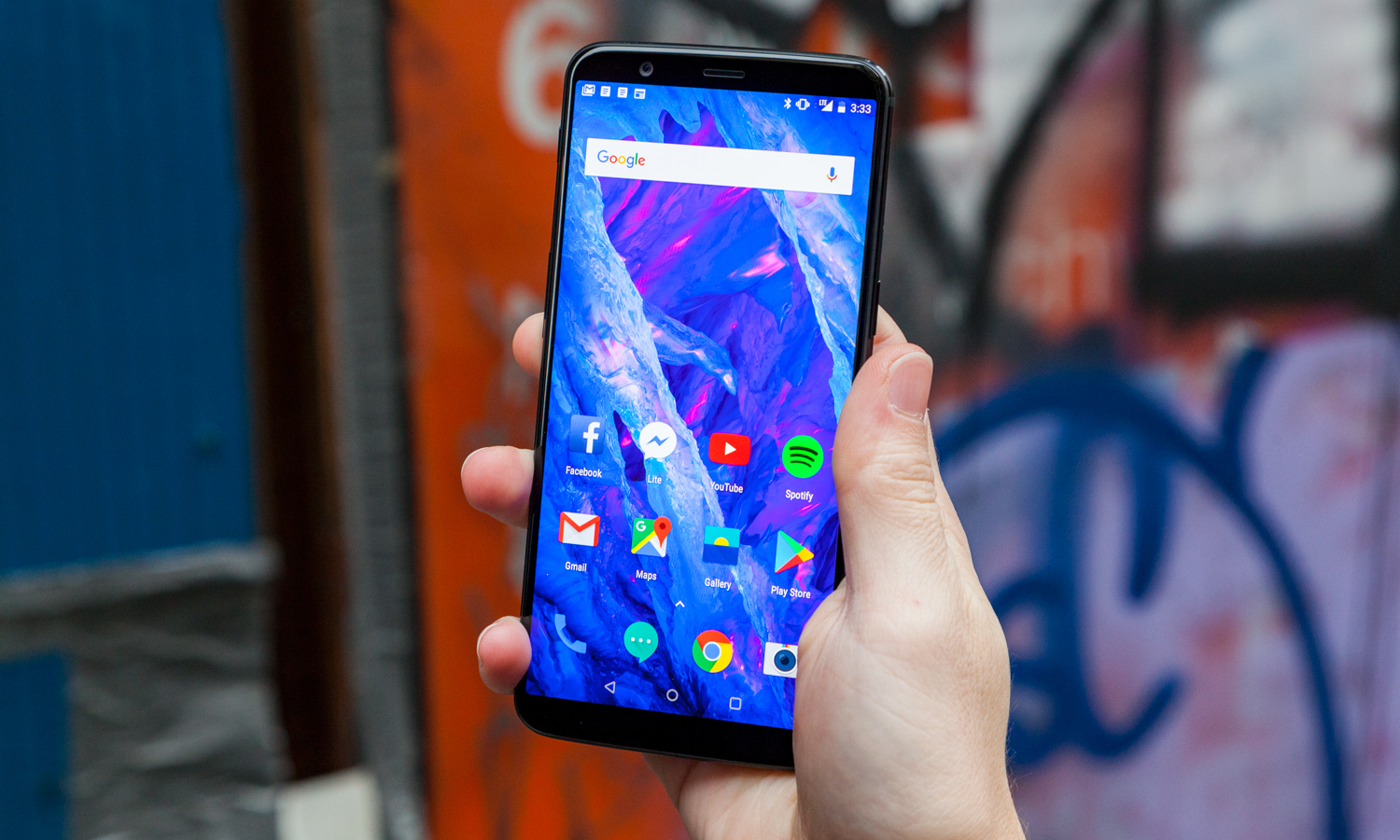
Conversely, the OnePlus 5T compares favorably with its own 18:9 screen and a metal back where the Galaxy S8 employs glass. There's no denying the 5T's premium build quality, but the finished product isn't as remarkable in the hand.
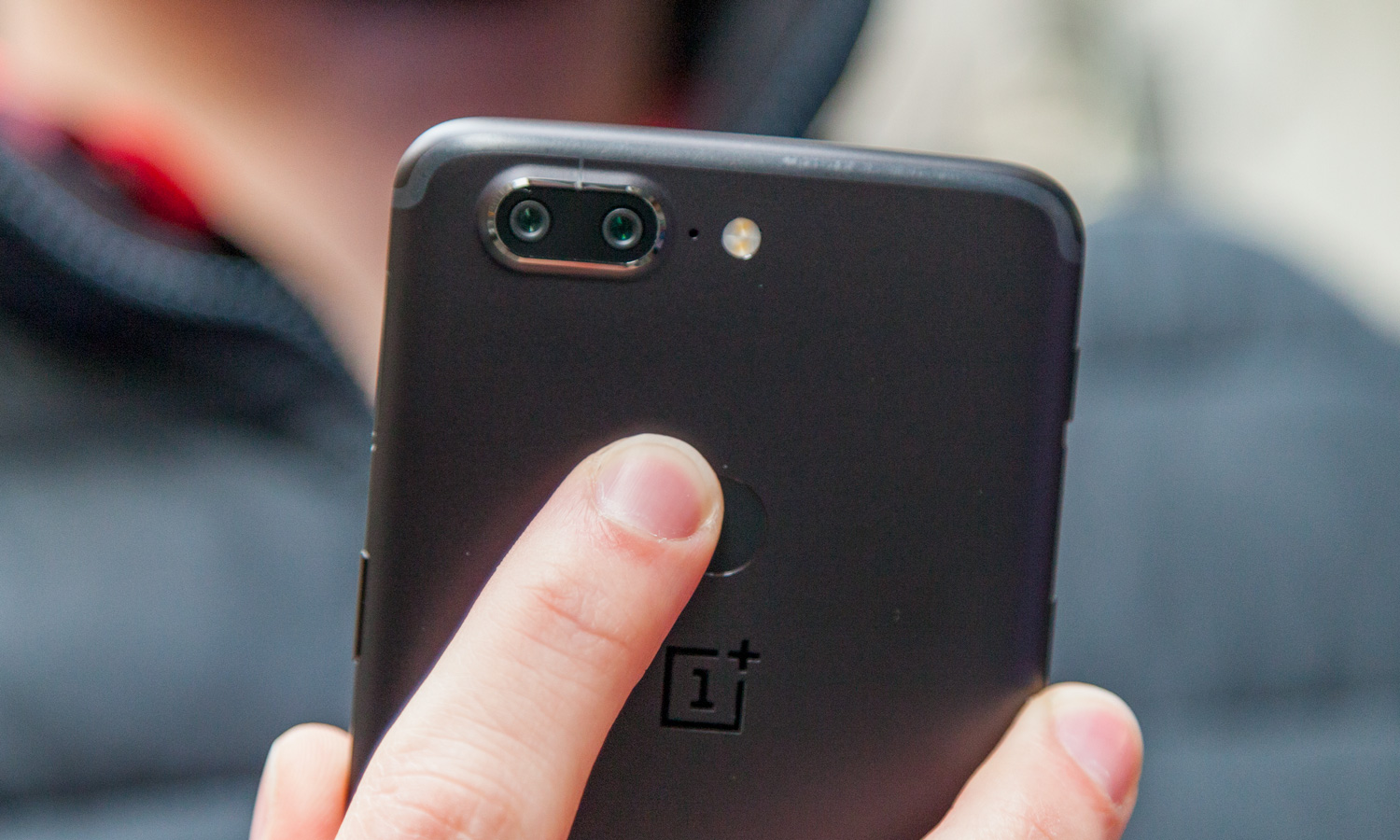
We do, however, much prefer OnePlus' placement of the fingerprint sensor. While Samsung made the questionable choice to place the scanner to the right of the rear camera, OnePlus smartly put the sensor in the center, where it belongs. We're also happy to see 3.5-millimeter headphone jacks included on both of these phones.
Get instant access to breaking news, the hottest reviews, great deals and helpful tips.
The Galaxy S8 doesn't simply look better, though — it's more durable too, thanks to IP68 water resistance. That means Samsung's phones can survive for 30 minutes in up to 5 feet of water. The OnePlus 5T boasts no such protection, only offering resistance to splashes.
Winner: Galaxy S8 and S8+
Display
Tiny bezels aside, the Galaxy S8's 2960 x 1440 Super AMOLED display is one of the best out there, with fantastic viewing angles, excellent brightness and a multitude of color profiles, ranging from hyperrealistic to ultrasaturated. The standard model's screen measures 5.8 inches, while the S8+ claims a 6.2-inch panel.
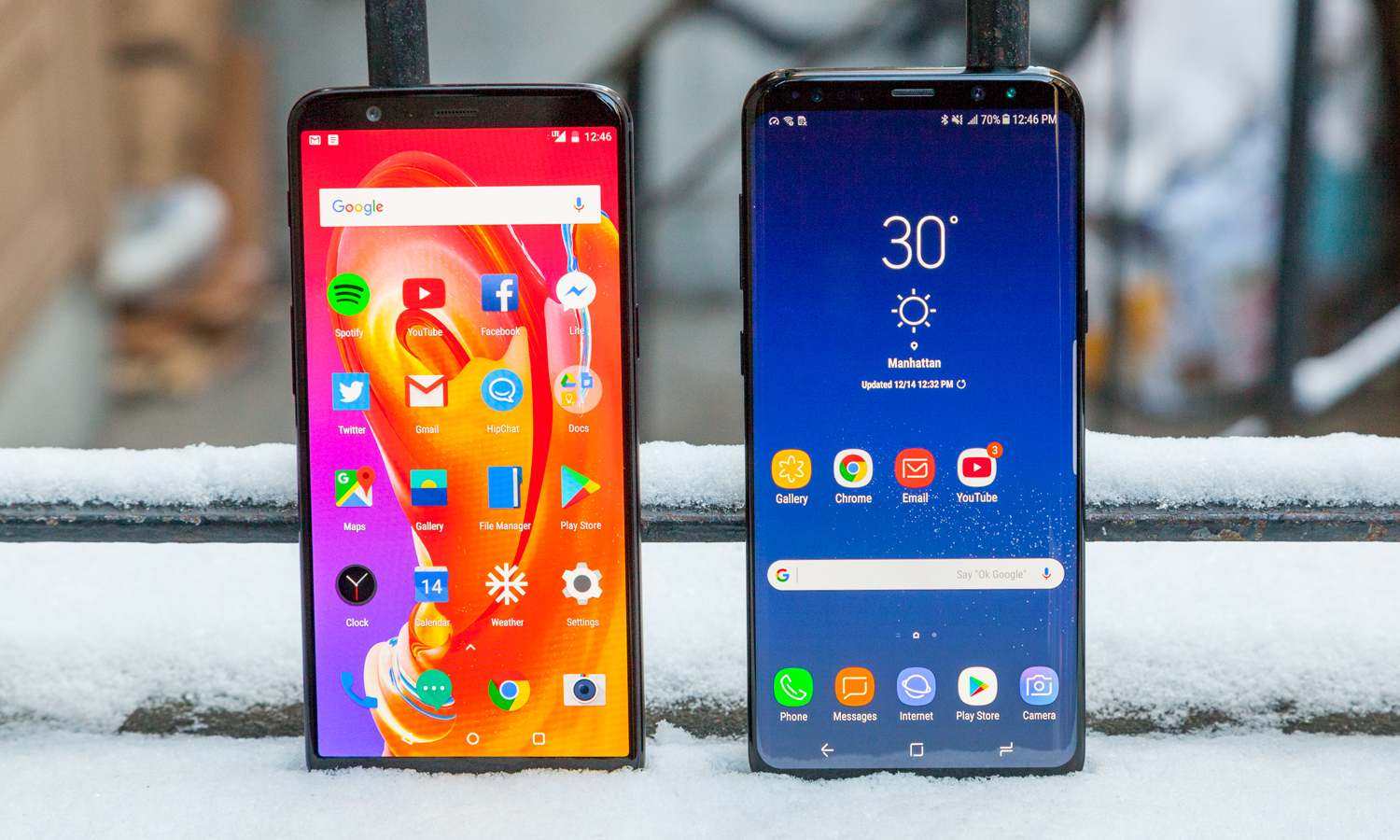
The OnePlus 5T's 2160 x 1080 AMOLED panel is pretty great, too, and OnePlus should be commended for fitting such a high-quality OLED screen onto such an inexpensive device. At 6 inches, the 5T's display straddles the line between the S8 and the S8+, though it isn't quite as sharp. The 5T's screen measures 402 pixels per inch, while the Galaxy S8 and S8+ outperform it at 570 and 530 ppi, respectively.
Fortunately, the OnePlus 5T's screen does get nearly as bright, thanks in part to the company's Sunlight Display technology that boosts contrast outdoors. The 5T's peak full-screen brightness of 394 nits is just a hair below the Galaxy S8's 408 nits.
MORE: Best Smartphones on the Market Now
The Galaxy S8 also boasts slightly more accurate colors with its stock display mode, notching a Delta-E score of 0.28. (Numbers closer to 0 are better.) Out of the box, the OnePlus 5T is a little farther off the mark, registering 0.47 — though both phones feature several different display modes to suit your preference.
Winner: Galaxy S8 and S8+
Cameras
On paper, the Galaxy S8's camera is at a disadvantage compared with the OnePlus 5T's. Both of Samsung's flagships make do with just one 12-megapixel sensor on the back, with an aperture of f/1.7. It's a great camera in its own right, but because it's not paired up with a second lens, the S8 doesn't allow for short-depth-of-field portraits that have become commonplace in many high-end smartphones.

Meanwhile, the OnePlus 5T combines a 16-MP main camera with a 20-MP secondary one, both of which sport an f/1.7 aperture. Unlike the Galaxy S8's camera, though, the 5T's lenses miss out on optical image stabilization.
In comparisons, the OnePlus 5T held its own against the Galaxy S8, especially in this pair of photos of a statue outside the Flatiron Building in New York. The 5T actually handles the shadows falling on the statue a little better, and takes advantage of more realistic contrast. However, the Galaxy S8 squeezes more color out of the foliage in front, the sky and the trees.
In this much darker scene at an indoor market, the Galaxy S8 dazzled with its brighter exposure, providing so much more detail in the darker areas. And even though Samsung's camera should technically be a little blurrier because of its lower megapixel count, the S8's shot actually appears sharper, which you can observe in the texture of the paper sign. Credit the S8's dual-pixel camera for the strong performance in low-light settings.
When we took portraits with both phones, the differences were stark, and that's mainly because of the OnePlus' extra lens. I used Portrait Mode on the 5T, which blurred the background while keeping my coworker Shaun perfectly in focus. The Galaxy S8 lacks such a function, but Samsung’s camera is still the one I’d rather have in my pocket for these situations. Shaun's skin tone looks truer to life in the S8's shot, which makes all the difference.
Our face-off also demonstrated that the Galaxy S8 takes better selfies. Its 8-MP, f/1.7 front camera handled the stark difference between light and dark falling across my face much better than the OnePlus 5T could. And while the 5T boasts double the megapixels up front for a sharper shot, its f/2.0 lens produced another image that generally could have used a brightness boost. The Galaxy S8's superior low-light performance earns it the win.
Winner: Galaxy S8 and S8+
Performance
In the performance category, these three phones are more alike than they are different, as each employs Qualcomm's Snapdragon 835 system-on-chip. The difference comes down to RAM, where things swing decidedly in OnePlus' favor.
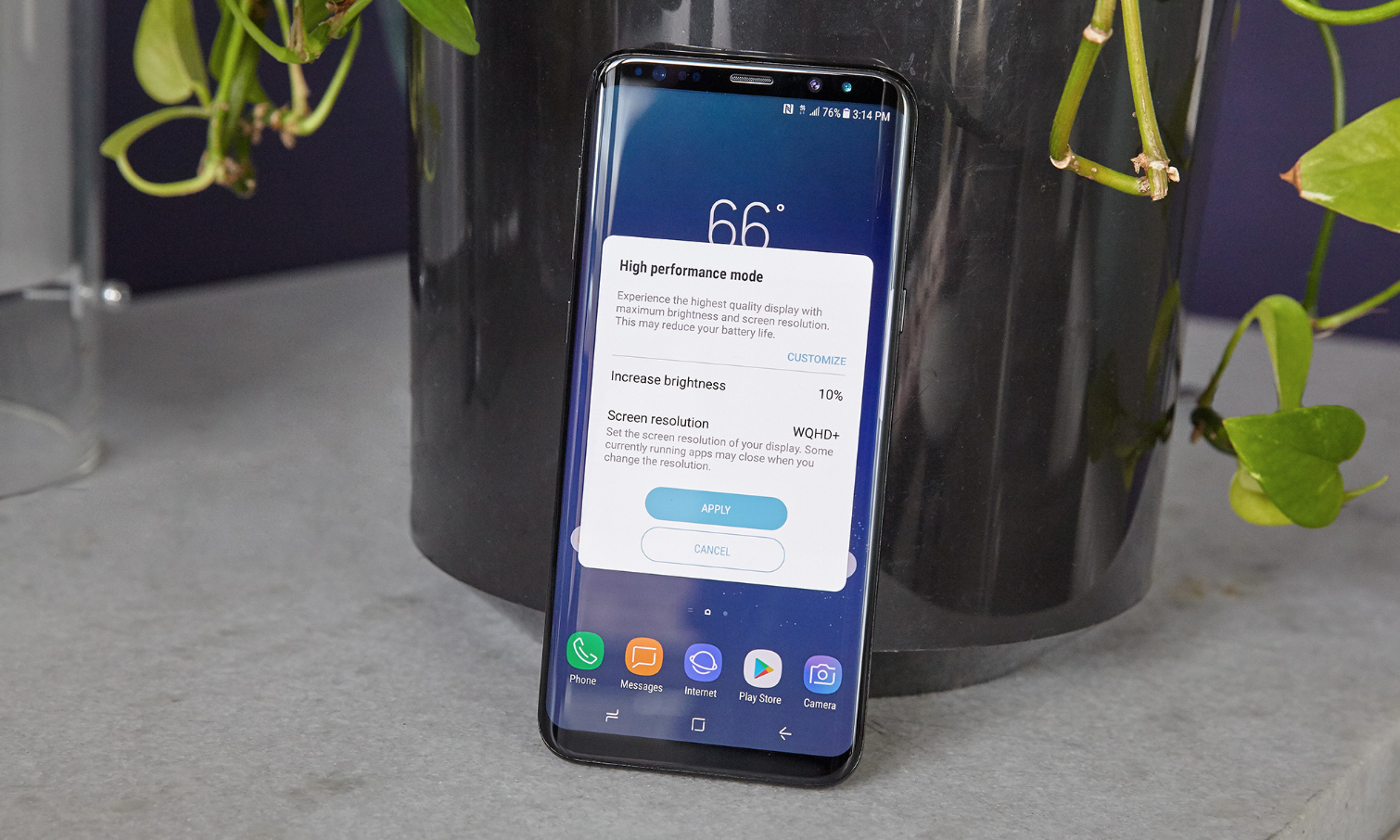
While the Galaxy S8 and S8+ each come in just one configuration consisting of 64GB of storage with 4GB of RAM, the OnePlus 5T starts with 6GB. Spend an extra $60 on the 5T, and you can expand that to 8GB. That's more memory than you can get on any other Android phone available in the States, and helps OnePlus' flagship crush multitasking operations with ease.
When it comes to storage, however, Samsung claws a few points back. Both the Galaxy S8 and the OnePlus 5T come standard with 64GB of onboard storage. And while the 8GB model of the 5T doubles the capacity to 128GB, neither version of the 5T somes with a microSD slot. Samsung has included support for microSD cards in both Galaxy S8 models, allowing you to add up to 2TB of media to your phone.
| Samsung Galaxy S8 | OnePlus 5T | |
| Geekbench 4 | 6,295 | 6,674 |
| 3DMark Ice Storm Unlimited | 36,508 | 41,496 |
Still, the level of performance that OnePlus offers for the money is unparalleled. The 5T defeated the Galaxy S8 handily in both the Geekbench 4 and the 3DMark Ice Storm Unlimited benchmarks.
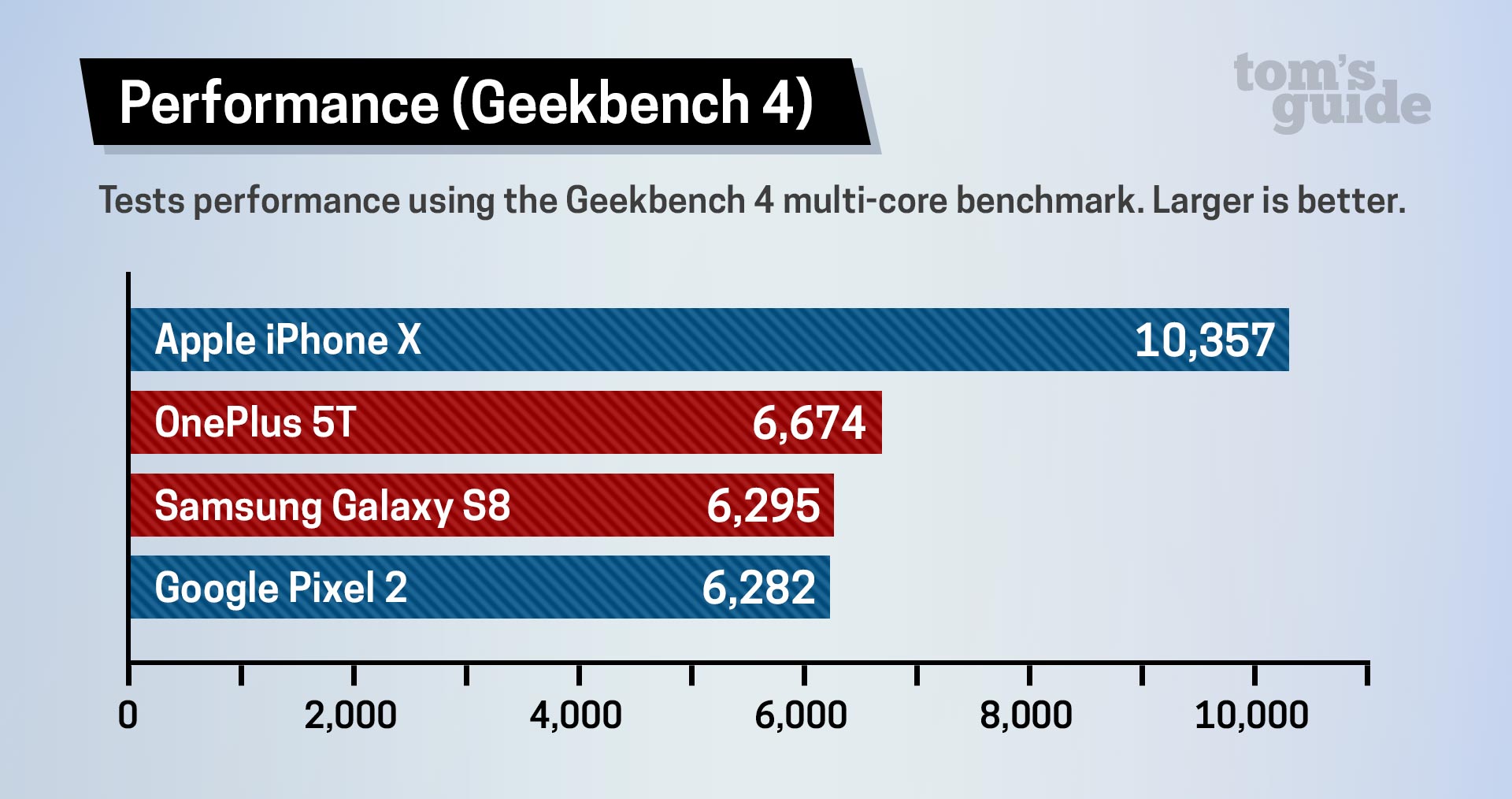
It also converted a 2-minute 4K video clip to 1080p in less time in the Adobe Premiere Clip app: 3 minutes and 20 seconds, compared with over 4 minutes for the Galaxy S8.
Winner: OnePlus 5T
Special Features
Samsung has loaded the Galaxy S8 with a ton of additional features you won't find on stock Android, like Edge shortcuts and the ability to take scrolling screenshots. There's also one notable peripheral, called the DeX Station ($149), which is a dock that allows you to use your Galaxy S8 as a makeshift desktop computer.

But the Galaxy S8's most obvious special feature is Bixby, Samsung's digital assistant that can be summoned with a press of the dedicated button on the left side of the phone. Like Google Lens on the Pixel 2, Bixby can be used in tandem with the device's camera to identify objects and call up relevant details. But perhaps even more useful is its ability to run complex tasks, like posting your last photo to Instagram, or turning off notifications from a specific app, all through dictation.
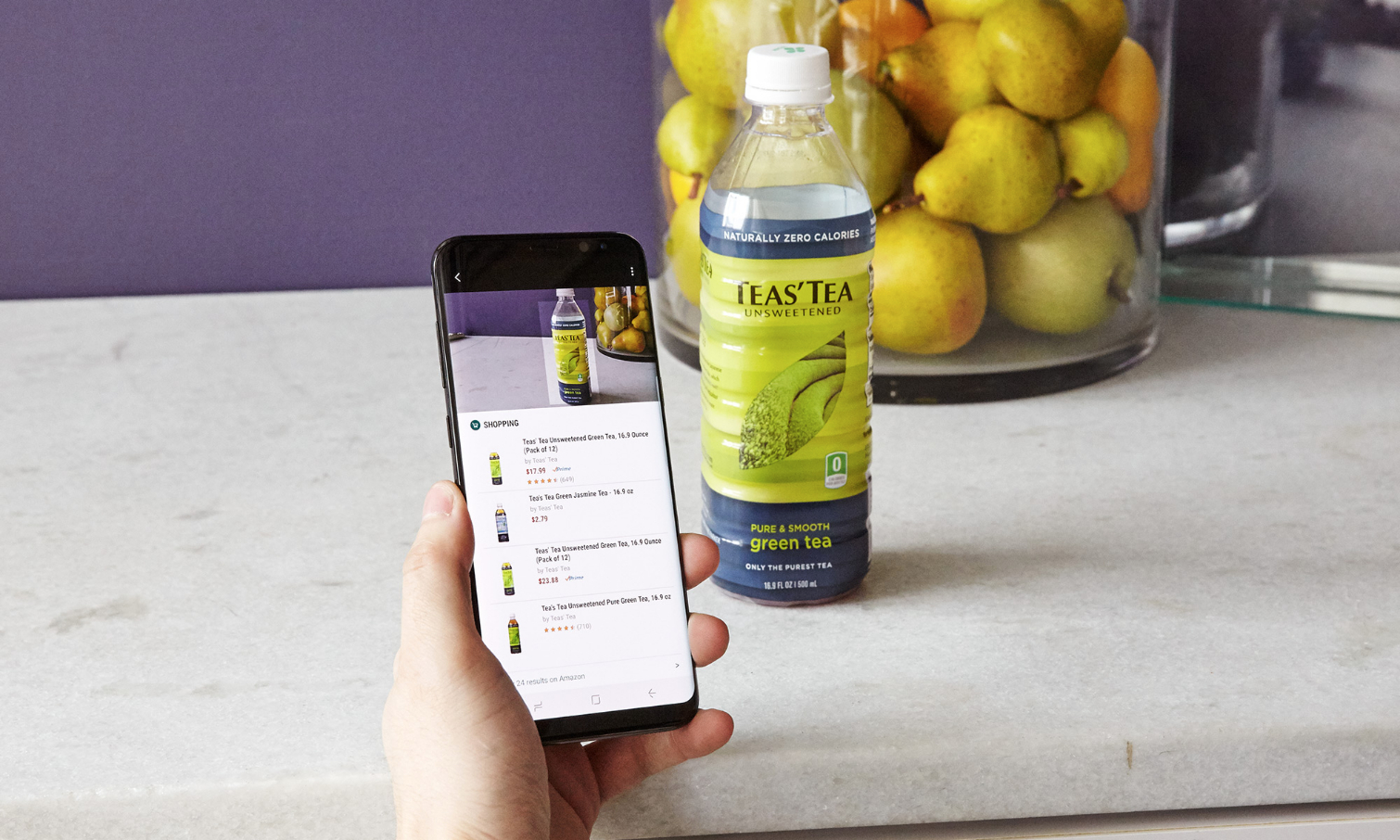
With the OnePlus 5T, you obviously won't get Bixby. But there's still Google Assistant, and OnePlus' OxygenOS is actually quite similar to stock Android.
OnePlus has thrown in a few extras, like Reading Mode, which allows you to view content in gray scale to make things easier on the eyes, and App Locker, which lets you encrypt specific apps with a password. And while the OnePlus 5T doesn't boast a depth-sensing camera like the iPhone X does, it can still pull off a 2D Face Unlock feature that is faster than what you get from other Android phones. The Galaxy S8 has a similar feature, along with Iris Recognition, which Samsung says is more secure.
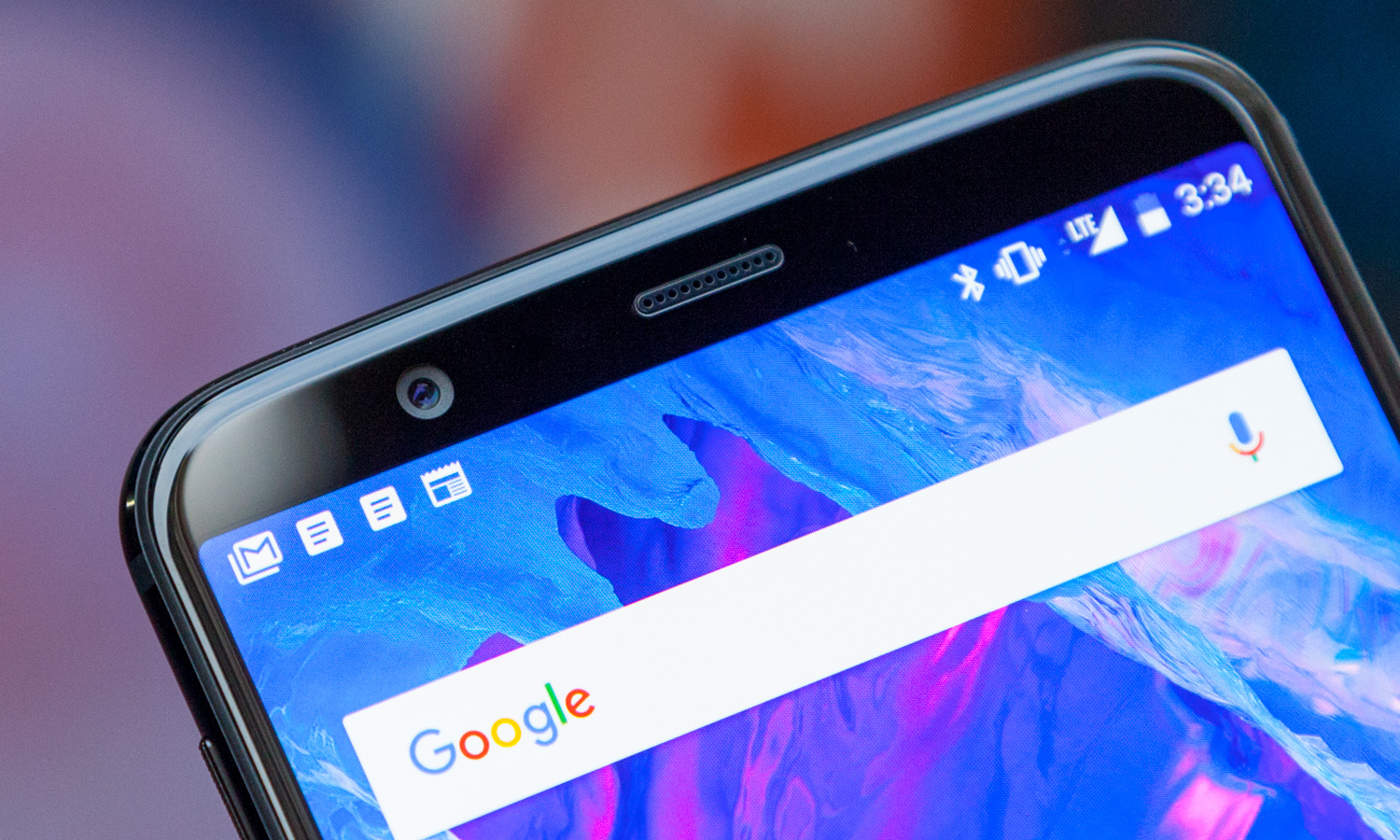
Overall, the Samsung phones win this round for their longer list of features, though we prefer OnePlus' OxygenOS interface to Samsung's TouchWiz for its speediness, ease of use and organizational similarity to stock Android.
Winner: Galaxy S8 and S8+
Battery
The Galaxy S8+ and OnePlus 5T finished our battery tests after a little more than 11 hours of continuous surfing over LTE. Those are great results for flagship phones, and much better than the smartphone average of 9 hours and 40 minutes. The smaller Galaxy S8 couldn't help but lose out with the least capacity of the three, though it still posted a more-than-respectable time of 10 hours and 39 minutes.
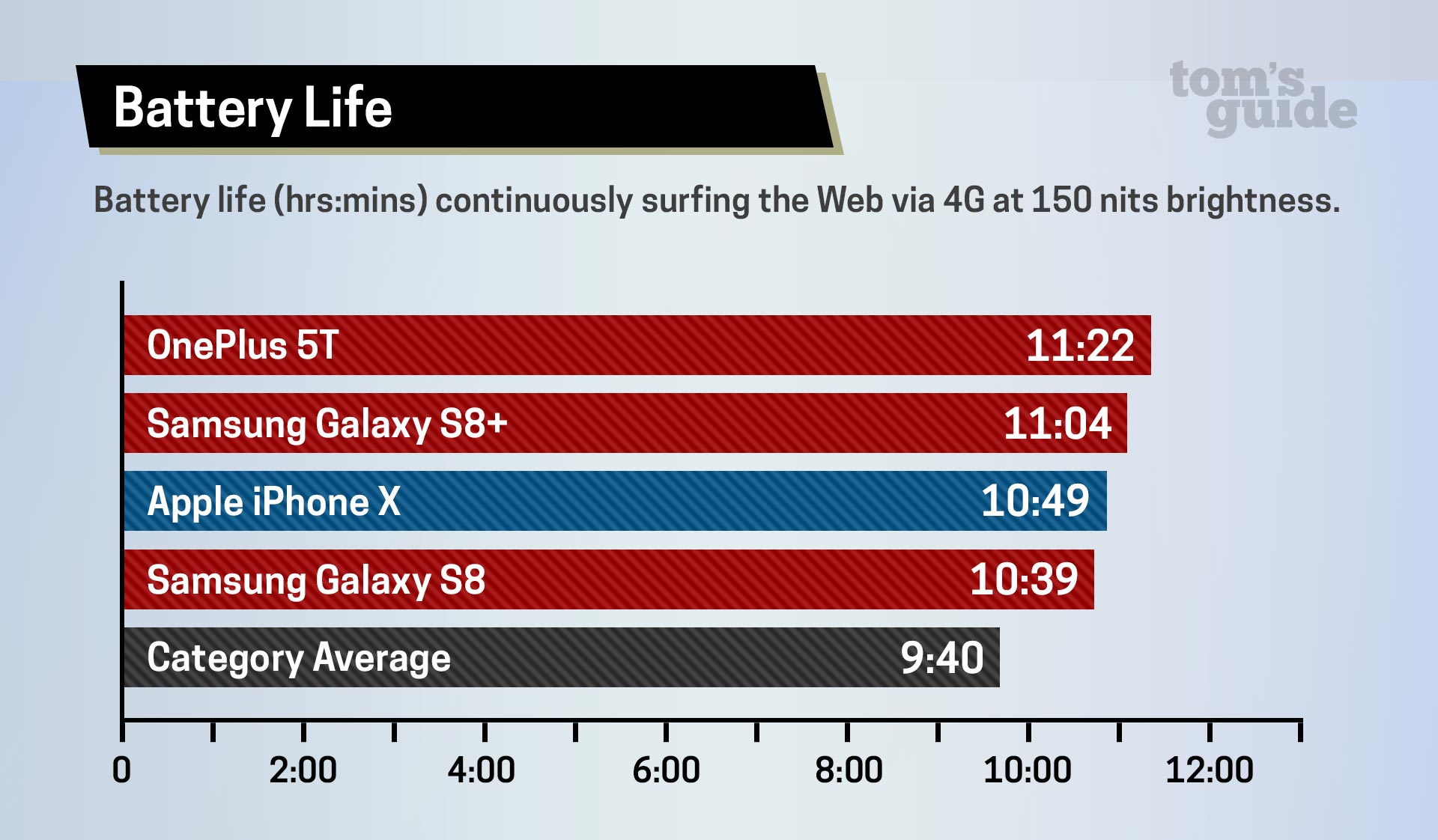
The difference, then, comes down to charging speeds. In our recent comparison to find the fastest-charging smartphone, the OnePlus 5T led the pack, reaching 59 percent in 30 minutes using its packaged Dash Charge adapter. In an hour, it was at 93 percent.
MORE: Smartphones with the Longest Battery Life
The Galaxy S8 and S8+ managed a little less than 40 percent in a half-hour. Interestingly, the 5.8-inch S8's battery is smaller than the OnePlus 5T's: 3,000 mAh versus 3,300 mAh. And the S8+ actually packs a larger, 3,500-mAh battery.

However, Samsung's phones have one advantage in the battery department: wireless charging. Both Galaxy S8 models are compatible with the Qi standard. The OnePlus 5T's metal construction prevents it from charging the same way, though ultimately we prefer the 5T's battery and Dash Charge system for its quickness.
Winner: OnePlus 5T
Value and Availability
Although the OnePlus 5T costs $225 less than the Galaxy S8, it isn't compatible with all the same networks. That's because the 5T is a GSM-only phone, which means it doesn't work on CDMA carriers, such as Verizon, Sprint and Sprint-owned Boost Mobile.
The Galaxy S8 ($724) and S8+ ($824) don't suffer from this problem. You can buy either of Samsung's phones on- or off-contract from all four major carriers, and many prepaid carriers as well. The OnePlus 5T can only be bought unlocked, directly from the company.
MORE: Best Big Screen Phones
However, the OnePlus 5T wins this category because it offers the greatest value in the flagship segment. For $499, you get a top-of-the-line processor, 6GB of RAM, an 18:9 OLED display and one of the best battery-charging systems on the market. Spending $60 gets you 8GB of RAM and doubles the storage to 128GB. Considering Samsung customers can upgrade to the more expensive Galaxy S8+ and still miss out on many of those features, the OnePlus 5T feels like a bargain.
Winner: OnePlus 5T
Overall Winner: Galaxy S8 and S8+
The Samsung Galaxy S8 and the OnePlus 5T are both fantastic, premium smartphones. But even with its strong specs, the OnePlus 5T still makes some small compromises to hit its lower price tag. A microSD slot and water resistance are two important features OnePlus-phone owners will miss out on. And although the 5T's design and software are impressive, they pale in comparison to the Galaxy S8's futuristic look and feel, and breadth of special features.
| Samsung Galaxy S8 | OnePlus 5T | |
| Design (10) | 9 | 7 |
| Display (15) | 13 | 10 |
| Cameras (20) | 17 | 14 |
| Performance (10) | 8 | 9 |
| Special Features (10) | 9 | 7 |
| Battery and Charging (20) | 16 | 18 |
| Value (15) | 9 | 13 |
| Overall (100) | 81 | 78 |
Meanwhile, the Galaxy S8 and S8+ have virtually everything you could ask for in a modern smartphone. While most companies are gutting headphone jacks and expandable memory, Samsung is still committed to giving users what they're asking for. Across the board — from the camera and display to the performance, battery life and design — Samsung's flagships remain the most thoroughly complete smartphones on the market today, and that's why they come out on top.
Credit: Tom's Guide
Adam Ismail is a staff writer at Jalopnik and previously worked on Tom's Guide covering smartphones, car tech and gaming. His love for all things mobile began with the original Motorola Droid; since then he’s owned a variety of Android and iOS-powered handsets, refusing to stay loyal to one platform. His work has also appeared on Digital Trends and GTPlanet. When he’s not fiddling with the latest devices, he’s at an indie pop show, recording a podcast or playing Sega Dreamcast.
-
mig6220 One comparison you always leave out-upload/download speeds.Reply
Samsung is Gigabit Lte compatible, which makes it one of the fastest (destroys iPhone)-is the 5t? -
larryeisenstein Also, if you don't mind horrible customer service and a non existent warranty, then the OnePlus is a viable option. Try using your warranty and you'll see the difference. Samsung may have had a big issue with it's note7, but eventually they fixed it. If that were the oneplus you would just be out $500.Reply
